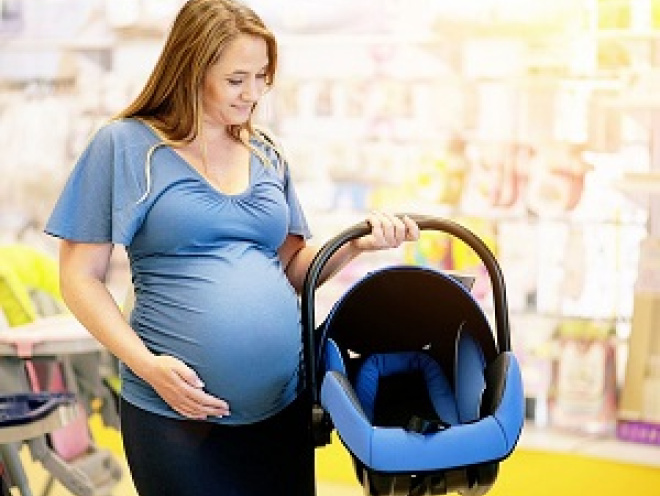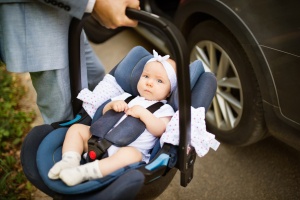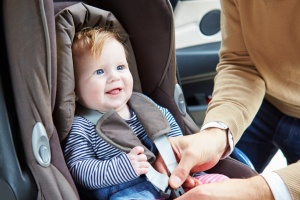With so many types of child car seats available, knowing which one you need can be difficult. This guide can help you choose one and use it safely.
Taking the time to learn about the different types of child car seats, and the law, safety and comfort issues around them is crucial. This guide to child car seats covers the basics and helps to clarify what you need to know.
What does UK child car seat safety law say?
The UK law states that in any car, van or goods vehicle:
- Children must use a child car seat from birth until they are 12 years old or 135 cm tall, whichever comes first.
- Children over 12 years old or a younger child who is more than 135 cm tall can just wear a seat belt without a car seat as well.
(Gov.uk, no date)
The first thing to remember is that if you are the driver of a car, you are responsible for the safety of all passengers in your car (Which?, 2022a).
It is also your responsibility to check seat belt wearing and restraint use by children under 14 years old, including the correct and safe fitting of baby and child car seats and booster seats. This is for the safety of everyone in the car (Which?, 2022a).
You can be fined if you fail to meet the legal requirements. Child car seats are designed to protect children’s vulnerable bodies to help prevent injury in case of a car accident (Which?, 2022a).
What are the basics of child car seat safety?
It is vital that you do the following:
- Babies and infants should be carried in rear-facing baby car seats for as long as they fit correctly into them. This reduces the risk of death or injury in a crash by 90% compared with being unrestrained.
- You must use the correct car seat for your baby or child’s height and weight – different types or classes of car seat are available for newborns, toddlers and older children.
- The child car seat must be installed and fitted correctly in the car.
- Some child car seats can be adjusted to grow with your baby but you’ll need to read the safety instructions and make the correct adjustments as they grow.
- The car seat fastenings must be adjusted correctly to fit your baby or child each time you travel.
- Remember to take off coats or bulky clothing before putting your child in their car seat, to ensure fastenings fit snugly.
- Even if your baby is asleep, you should take them out of the car seat when you arrive at your destination. Once they're out of the car seat, transfer them to a firm, flat surface like their Moses basket or cot to continue sleeping.
(Gov.uk, no date; Which?, 2022a, Lullaby Trust, no date)
Do we need a car seat to bring our baby home from hospital?
If your baby is born in a hospital or birth centre and you are travelling home by car, you will need a car seat to drive your newborn baby home safely. It's a good idea to practise fitting the car seat and adjusting the straps a few times before your baby is born. That way you are familiar with how it all works (NHS, 2019).
Are there any exceptions to when a child car seat must be used?
There are very few exceptions to when a child under the age of three years can travel without a child car seat (Gov.uk, no date). See our article about car seat laws for a list of exceptions.
Why do we need a rear-facing car seat for our baby?
Research has shown that rear-facing car seats provide greater protection for your baby's head, neck and spine than forward-facing seats (Which?, 2022). So it‘s best to keep your newborn baby in a rear-facing car seat for as long as possible.
What are i-Size car seats?
i-Size seats are height-based child car seats. They are made in line with the European car seat regulation, R129 (Gov.uk, no date).
i-Size car seats are designed to keep children rear-facing for longer, provide better side impact protection and make car seats easier to fit correctly. If you are using an i-size seat, your baby will be kept rear-facing until they’re at least 15 months old (RoSPA, no date).
What child car seat requirements should I look for?
Some of the requirements are that the seat:
- conforms to the UN standard, ECE Regulation 44.04 (or R 44.03) or to the new EU-approved i-size regulation, R129. These have a label showing a capital ‘E’ in a circle and ‘R129’
- is suitable for your child’s weight, height and size
- is correctly fitted according to the manufacturer’s instructions.
(Gov.uk, no date)
What different types of child car seats are there?
There are three categories of children’s car seats:
- Rear-facing seats, which are suitable from when your baby’s a newborn and for as long as possible to offer greater protection.
- Forward-facing seats, which contain a harness or impact cushion.
- Booster seats for older children, which can have either a high back or can be backless.
(RoSPA, no date)
They all depend on either the weight or height of the child (RoSPA, no date). RoSPA have a table showing the different types of child seat.
What did the changes to the law about booster cushions say?
New regulations came into force in February 2017 about the sale and use of booster car seats and cushions. The regulations prevent manufacturers from introducing new models of backless car booster seats or booster cushions for children shorter than 125 cm and weighing less than 22 kg (Which?, 2022b).
This change doesn’t affect existing models of booster cushions, which are classed as a group 2/3 seat and can be used for children weighing 15 kg and above (Gov.uk, 2017). The change means that the products available on the market are better suited to younger children (Which?, 2022b).
This page was last reviewed in June 2022.
Further information
Our support line offers practical and emotional support with feeding your baby and general enquiries for parents, members and volunteers: 0300 330 0700.
Make friends with other parents-to-be and new parents in your local area for support and friendship by seeing what NCT activities are happening nearby.
Further information is available from the Royal Society for Prevention of Accidents (RoSPA).
You can find out more from the Government website about UK car seat law.
The NHS has more information about child car seat safety.
Gov.uk. (2017) New child car seat rules: no change for existing booster seats. Available at: https://www.gov.uk/government/news/new-child-car-seat-rules-no-change-for-existing-booster-seats [Accessed 2nd June 2022].
Gov.uk. (no date) Child car seats: the law. Available at: https://www.gov.uk/child-car-seats-the-law [Accessed 2nd June 2022].
Lullaby Trust. (no date) Car seats and SIDS. Available at: https://www.lullabytrust.org.uk/safer-sleep-advice/car-seats-and-sids/ [Accessed 2nd June 2022].
NHS. (2019) Choosing a baby car seat. Available at: https://www.nhs.uk/conditions/baby/first-aid-and-safety/safety/choosing… [Accessed 8th June 2022].
RoSPA. (no date) Types of seat. Available at: http://www.childcarseats.org.uk/types-of-seat [Accessed 2nd June 2022].
Which? (2022a) Child car seat laws in the UK. Available at: https://www.which.co.uk/reviews/child-car-seats/article/child-car-seat-laws-uk-and-abroad/child-car-seat-laws-in-the-uk. [Accessed 2nd June 2022].
Which? (2022b) Booster seats - are you breaking the law? Available at: https://www.which.co.uk/reviews/child-car-seats/article/booster-seats-are-you-breaking-the-law. [Accessed 2nd June 2022].








